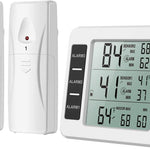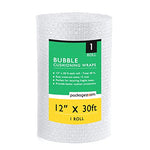You have no items in your shopping cart.
Are you experiencing decreased performance, increased fuel consumption, or strange smells from your vehicle? If so, it's time to learn about DPF cleaning. In this comprehensive guide, we will delve into the world of Diesel Particulate Filter (DPF) cleaning and explore why it is essential for maintaining your vehicle's optimal performance and reducing harmful emissions. So, let's dive in and uncover the mysteries of DPF cleaning!
What is DPF Cleaning?
At its core, DPF cleaning refers to the process of removing accumulated soot and ash from a vehicle's Diesel Particulate Filter. The DPF plays a crucial role in trapping harmful particulate matter, preventing it from being released into the environment. Over time, the DPF becomes clogged, leading to various performance issues and increased emissions. Regular cleaning ensures that the DPF functions optimally, extending its lifespan and maintaining your vehicle's efficiency.
Why is DPF Cleaning Important?
1. Enhanced Performance and Fuel Efficiency
When a DPF becomes clogged, it restricts the flow of exhaust gases, resulting in decreased engine performance and reduced fuel efficiency. By cleaning the DPF, you remove the accumulated soot and ash, allowing the exhaust gases to flow freely. This restoration of proper airflow ensures that your vehicle can operate at its best, delivering the performance you expect while saving you money at the pump.
2. Reduced Harmful Emissions
DPF cleaning plays a vital role in reducing harmful emissions, such as particulate matter and nitrogen oxides (NOx). As the DPF becomes clogged, the trapped soot and ash can escape into the environment, contributing to air pollution. By regularly cleaning the DPF, you prevent these harmful particles from being released and promote cleaner air for everyone.
3. Extended DPF Lifespan
A well-maintained and regularly cleaned DPF can have a significantly longer lifespan compared to a neglected one. When the DPF is properly cleaned, it regains its ability to trap and store soot and ash effectively. By preventing excessive build-up, you avoid irreversible damage to the filter and prolong its overall lifespan, saving you from costly replacements.
How is DPF Cleaning Done?
Now that we understand the importance of DPF cleaning, let's explore the various methods used to accomplish this task effectively. There are two primary methods for cleaning a DPF:
1. Thermal Regeneration
Thermal regeneration is a process that involves burning off the accumulated soot and ash within the DPF. This method is often performed automatically by the vehicle's engine management system during normal driving conditions. However, if the DPF is severely blocked, a professional cleaning service may be required to initiate a more intensive thermal regeneration process.
2. Professional Cleaning Services
Professional cleaning services offer specialized equipment and expertise to clean DPFs thoroughly. These services utilize advanced techniques, such as pneumatic cleaning, ultrasonic cleaning, or high-pressure water jets, to remove the accumulated soot and ash. In some cases, a cleaning solution may be used to dissolve stubborn deposits, ensuring a complete and thorough cleaning process.
FAQs About DPF Cleaning
-
What are the signs that my DPF needs cleaning?
Signs that your DPF may require cleaning include decreased engine performance, increased fuel consumption, frequent DPF warning lights, and strong odors coming from the exhaust. If you experience any of these symptoms, it's essential to have your DPF inspected and cleaned if necessary.
-
How often should I clean my DPF?
The frequency of DPF cleaning depends on various factors, including your driving habits and the vehicle's make and model. As a general guideline, it is recommended to have your DPF cleaned every 100,000 to 150,000 kilometers. However, consult your vehicle's manufacturer guidelines or a professional mechanic for specific recommendations.
-
Can I clean the DPF myself?
While it may be tempting to clean the DPF yourself, it is highly recommended to seek professional cleaning services. Cleaning a DPF requires specialized equipment and expertise to ensure a thorough and proper cleaning process. Attempting to clean it yourself may result in further damage or ineffective cleaning.
-
How much does DPF cleaning cost?
The cost of DPF cleaning can vary depending on factors such as the type of vehicle, the severity of the blockage, and the chosen cleaning service provider. On average, expect to pay between $200 and $500 for professional DPF cleaning. However, it is always best to obtain quotes from reputable service providers for accurate pricing.
-
Is DPF cleaning covered by warranty?
DPF cleaning may or may not be covered by your vehicle's warranty. It is essential to review your warranty documents or consult your dealership to determine if DPF cleaning is included. In some cases, extended warranties or service plans may cover DPF cleaning as part of routine maintenance.
-
Can I prevent DPF blockage?
While it is impossible to prevent DPF blockage entirely, there are measures you can take to minimize the risk. Regularly driving at high speeds for extended periods can help promote the automatic regeneration process. Additionally, using high-quality diesel fuel and adhering to the recommended maintenance schedule for your vehicle can reduce the likelihood of severe blockages.
Conclusion
DPF cleaning is a crucial aspect of vehicle maintenance that promotes optimal performance, reduced emissions, and extended DPF lifespan. By understanding the importance of regular cleaning, recognizing the signs of a blocked DPF, and seeking professional cleaning services, you can ensure that your vehicle operates efficiently and responsibly. Don't neglect your DPF—give it the attention it deserves for a cleaner, greener, and more reliable driving experience!








